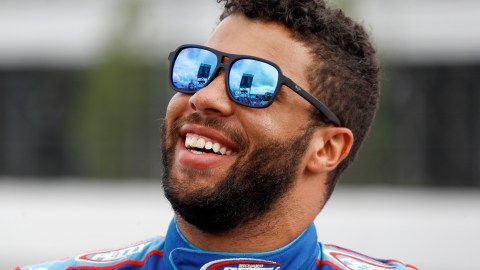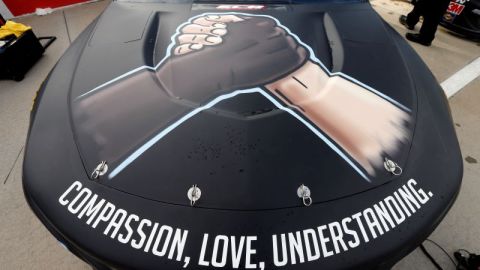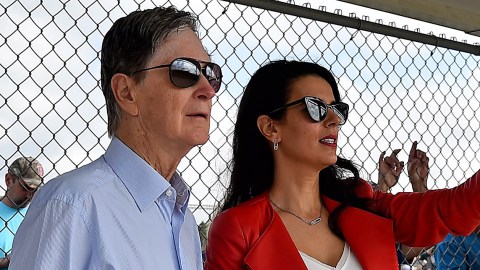 Doug Collins was using advanced statistics before anybody else, in that he could memorize lines upon lines of statistics with a memory that could only be called “advanced.” Until the John Hollingers of the world came along with their player efficiency ratings and true shooting percentages, Collins was doing similar things in his head with old-fashioned, traditional stats.
Doug Collins was using advanced statistics before anybody else, in that he could memorize lines upon lines of statistics with a memory that could only be called “advanced.” Until the John Hollingers of the world came along with their player efficiency ratings and true shooting percentages, Collins was doing similar things in his head with old-fashioned, traditional stats.
Just don’t expect him to admit it.
Collins is a caricature now, and he only has himself to blame for that. Early this season, Collins sealed his fate in the groupmind of new-school NBA fans with a sarcastic riff on advanced statistics, pointing to his gut to describe how he made decisions and joking that if he had to study spreadsheets before making a decision, he would “blow [his] brains out.”
With that, it was fairly certain Collins would be persona non grata with basketball’s “Moneyball” movement, banished to the Negative Zone with Art Howe. Collins’ departure as Sixers coach at the end of the season was therefore even less surprising than it normally would be after a 34-win campaign. Losing games is one thing. Losing the ever-growing blogosphere, which increasingly sides with the analytical movement, is a death knell.
Now Grizzlies coach Lionel Hollins, one of the best bench bosses in the business, reportedly is prepared to pound pavement out of Memphis because of philosophical differences with the front office, which favors a statistical bent. And like Collins’ fate in Philadelphia, it all seems needlessly silly.
This is all familiar territory for anyone who lived through the culture war in baseball a decade ago, when the five tools and on-base percentage were treated as irreconcilable concepts. You sided with either Billy Beane, the forward-thinking general manager of the Oakland A’s, or Howe, the rigid traditionalist manager who hated to be told he couldn’t call for bunts and that strikeouts weren’t atrocities to the sport. Then, as now, the entire entire argument was unnecessary and oversimplified. Teams still bunt occasionally. Every team has a statistics department of varying size. Nobody “won,” they just learned to coexist.
From most indications, Hollins just plain doesn’t like Hollinger, the former ESPN writer and now the Grizzlies’ vice president of basketball operations. New owner Robert Pera, a 35-year-old tech geek (i.e. genius), has an affinity for numbers, which were pretty good to him in founding Ubiquiti Networks, and in a battle between the film-and-practice Hollins and the numbers-crunching Hollinger, Pera was always going to take Hollinger’s side. Hollins’ greatest fault is in not realizing this, which is why it was a gross miscalculation if he truly dressed down Hollinger in front of his players at a practice during the playoffs, as has been reported. You ain’t gonna win an argument with the boss’ baby.
Yet, thanks to David Halberstam‘s diary of the 1979-80 Portland Trail Blazers, we know Hollins cares about some statistics — his own. As a young point guard, Hollins spent the early part of that season fretting over his contract, his diminished playing time and how that diminished playing time affected his numbers, thereby affecting his next contract. Such pettiness popped up again this season, when Hollins led the whining about the midseason trade that sent Rudy Gay to the Raptors. It was a bad look for a team that prides itself on a no-excuses attitude, and it revealed the rift between the coach and management.
It is unclear just how much Memphis’ front office tried to meddle in Hollins’ coaching. Did they take Hollins aside between quarters and order him to play certain lineups? If so, that would be inappropriate. Did they provide him with information or make suggestions after practice as to what personnel combinations would optimize his players’ talents? If so, he is negligent for not considering all information that might give his team an edge.
Most likely, however, this was a simple conflict of semantics. Consider Collins, who possesses an eerie recall of where each player was positioned, how much time was on the clock, what the score was and how many people were in the stands on a key play in, say, 1978. His pregame and postgame interviews were can’t-miss sessions, where he would lament the other team’s ability to generate 52 points per game in the paint and wonder aloud how his team would keep the opponent from shooting 59 percent on left-elbow jump shots.
These were all part of the so-called realm of “advanced statistics,” and as far as anyone can tell, Collins never blew his brains out. It’s advanced statistics without the label of advanced statistics, and every good coach uses them to some extent. The conflict comes from peer pressure, that childish reality most of us hopefully get past after junior high school. None of the coaches — the “cool” kids — want people to see them hanging out with the nerds, so they call the nerds names even though some of the jocks, like Collins, have a lot more in common with the nerds than it seems on the surface.
Likewise, Hollins eventually figured out in the playoffs that Tony Allen made his team better, despite a lack of any refined offensive skills, than Jerryd Bayless did. That was pretty much the same conclusion reached by the people with pocket protectors and calculators. Maybe if Hollins had listened to the geeks, he would have made an adjustment earlier and his team would not have been swept by the Spurs in the Western Conference finals.
Or maybe it would not have made a difference. That is not a hedge away from the preceding paragraph. In fact, it is the entire point. If Hollins and the Grizzlies’ statheads had been able to reconcile their evaluations and come to exactly the same conclusion, the rift between coach and front office need never to have existed. The old and new are not mutually exclusive. Hubie Brown, one of Hollins’ predecessors in Memphis, began coaching in the 1970s, and although he doesn’t use advanced statistics buzzwords, his analysis has always been tinged with progressive thinking. At 79 years old, Brown clearly views new methods of instruction and analysis not as dangerous changes to his way of life but as another tool in understanding the best game there is.
Hollins will be highly sought this summer, with Collins’ Sixers among the teams looking for a top-flight coach. The Nets and Clippers, both much closer to contention than the Sixers, are also in need of new coaches.
Wherever Hollins ends up, his new team will be getting an upgrade on the bench. How much of an upgrade depends on him. If he arrives at his new job and seeks out the folks in the analytics department — the NBA equivalent of the quarterback going to sit at the math club’s table in the cafeteria — he could find that it makes him a better coach than ever, and show him how frivolous his little feud in Memphis really is.
Have a question for Ben Watanabe? Send it to him via Twitter at @BenjeeBallgame or send it here.
Photo via Facebook/Memphis Grizzlies



